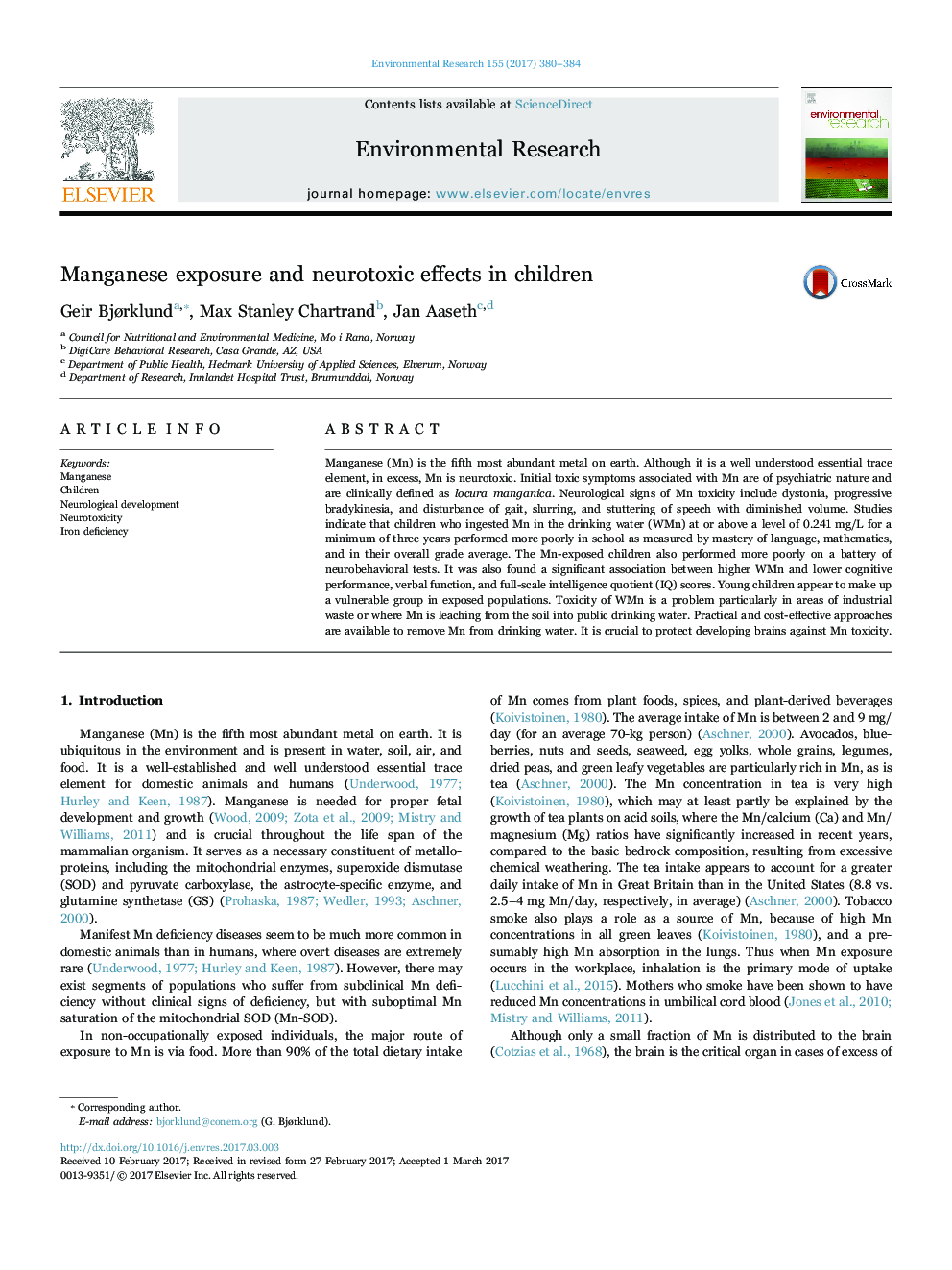| کد مقاله | کد نشریه | سال انتشار | مقاله انگلیسی | نسخه تمام متن |
|---|---|---|---|---|
| 5756222 | 1622548 | 2017 | 5 صفحه PDF | دانلود رایگان |
عنوان انگلیسی مقاله ISI
Manganese exposure and neurotoxic effects in children
ترجمه فارسی عنوان
قرار گرفتن در معرض منگنز و اثرات نوروکوکسیک در کودکان
دانلود مقاله + سفارش ترجمه
دانلود مقاله ISI انگلیسی
رایگان برای ایرانیان
کلمات کلیدی
منگنز، فرزندان، توسعه عصبی، عصبی عصبی، کمبود آهن،
موضوعات مرتبط
علوم زیستی و بیوفناوری
علوم محیط زیست
بهداشت، سم شناسی و جهش زایی
چکیده انگلیسی
Manganese (Mn) is the fifth most abundant metal on earth. Although it is a well understood essential trace element, in excess, Mn is neurotoxic. Initial toxic symptoms associated with Mn are of psychiatric nature and are clinically defined as locura manganica. Neurological signs of Mn toxicity include dystonia, progressive bradykinesia, and disturbance of gait, slurring, and stuttering of speech with diminished volume. Studies indicate that children who ingested Mn in the drinking water (WMn) at or above a level of 0.241Â mg/L for a minimum of three years performed more poorly in school as measured by mastery of language, mathematics, and in their overall grade average. The Mn-exposed children also performed more poorly on a battery of neurobehavioral tests. It was also found a significant association between higher WMn and lower cognitive performance, verbal function, and full-scale intelligence quotient (IQ) scores. Young children appear to make up a vulnerable group in exposed populations. Toxicity of WMn is a problem particularly in areas of industrial waste or where Mn is leaching from the soil into public drinking water. Practical and cost-effective approaches are available to remove Mn from drinking water. It is crucial to protect developing brains against Mn toxicity.
ناشر
Database: Elsevier - ScienceDirect (ساینس دایرکت)
Journal: Environmental Research - Volume 155, May 2017, Pages 380-384
Journal: Environmental Research - Volume 155, May 2017, Pages 380-384
نویسندگان
Geir Bjørklund, Max Stanley Chartrand, Jan Aaseth,
